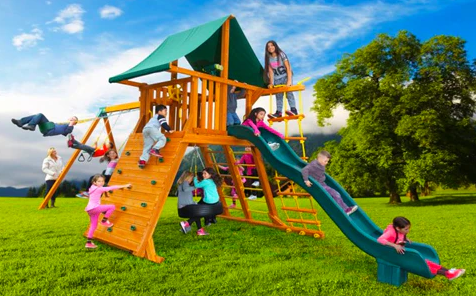Rigorous Safety Standards Compliance
When selecting indoor playground equipment, safety should be your foremost concern. Quality manufacturers adhere to stringent standards such as ASTM International and the European EN 1176. These standards ensure that all play structures, materials, and designs mitigate risk and prevent accidents. For example, any reputable manufacturer should offer equipment that has passed shock absorption tests, where flooring materials must exhibit superior impact-attenuating properties to protect children during falls. Typically, these safety surfaces are tested to reduce the impact from heights of up to 6 feet, reflecting common fall heights in play areas.
Material Quality and Durability
The durability of indoor playground equipment hinges on the quality of materials used. High-caliber manufacturers employ robust materials like commercial-grade steel, heavy-duty plastic, and sustainable woods that are treated to resist wear, tear, and environmental stressors. These materials are chosen for their ability to withstand constant use by children, ensuring a lifecycle that spans several years without significant degradation. For instance, well-constructed playground equipment should have no problem enduring over 10,000 hours of play, equivalent to roughly 10 years of use in a busy indoor facility.
Customization That Enhances Safety
Customization is not only about aesthetic appeal but also about enhancing safety. Tailored solutions allow for the equipment to fit perfectly within the designated space, preventing overcrowding and ensuring adequate room for safe play. Manufacturers that offer customization often provide detailed 3D models and simulations to predict how well the equipment will function within the space, helping to avoid potential hazards like entrapment or improper spacing between elements.

Certifications and Testing
Trustworthy manufacturers of indoor playground equipment will readily display their certifications. Look for marks of quality assurance like the International Play Equipment Manufacturers Association (IPEMA) certification. Additionally, proactive testing is a sign of a manufacturer's commitment to safety. Periodic stress tests and materials analysis should be standard practice, with results available upon request. This transparent approach gives you confidence in the equipment's ability to perform safely over time.
Consumer Feedback and After-Sales Support
Feedback from other customers can provide real insights into the safety and durability of playground equipment. Positive reviews often highlight quick response times to maintenance requests and the longevity of the equipment under regular use. Furthermore, strong after-sales support, including maintenance services and availability of replacement parts, is crucial. This ensures that any wear or potential safety issues can be promptly addressed, maintaining the integrity of the playground.
Transparent Pricing and Investment Value
Investing in high-quality indoor playground equipment should be viewed as a long-term investment. Quality equipment may come with a higher upfront cost—ranging from $20,000 to $50,000 for a fully outfitted indoor playground—but the cost reflects the durability and safety standards that protect children and reduce the need for frequent replacements. Over time, this investment delivers value through enduring performance and minimized liability risks.
By prioritizing these factors when selecting your indoor playground equipment, you ensure a safe, enjoyable, and durable play environment for children. This approach not only fosters a fun atmosphere but also protects your investment and the well-being of your young users.